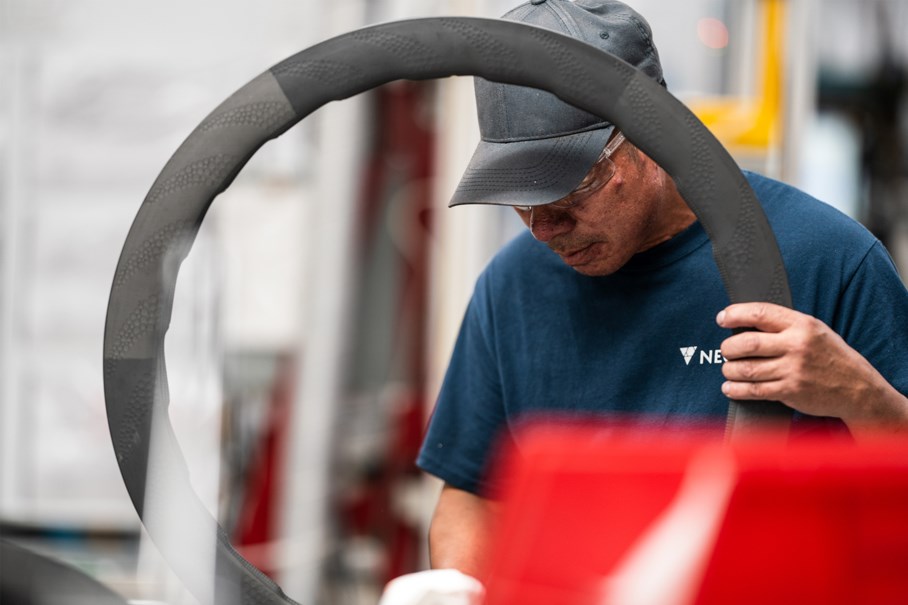Zipp Engineer Interview Series
All About Carbon Part ll: Wheel Design
This is the second episode of a three-part series all about carbon fiber. Part I looked at the basic properties of carbon fiber. Part II focuses on designing carbon wheels, and Part III will examine manufacturing with carbon.
It’s time for Part II of our All About Carbon Zipp Speed Podcast Series. In this episode, Zipp design engineers Aaron Packard and Ben Waite discuss the potential and challenges of designing carbon fiber bicycle wheels. Aaron focuses on mountain bike wheels and Ben on road wheels. Also, please listen to Part I on the Basics of Carbon. Below are edited highlights from our conversation with Aaron and Ben:
How do you approach a new wheel design?
BEN: For a new wheel project, we start working early on with product managers who have a feel for what the market needs. Normally our projects are around a year. A good example is on our latest 858 NSW; a lot of the previous Zipp marketing material and design philosophy was all about aero. We’ve kind of reached peak aero in a way. So, we’ve moved into our Total System Efficiency story, and on our deep section wheels, which is what the 858 is, we’ve been overbuilt and heavy before. So, early on in that project, we were challenged with a strict weight reduction. One of the huge advantages of carbon over aluminum wheels is that we could be as specific as we’ve ever been in placing carbon strips in that 858 to reduce wheel weight.
AARON: We’ve worked at Zipp to create a modeling system that lets us look at multiple shapes and profiles and create many different profiles we can evaluate quickly. It’s kind of like taking an image and pixelating it. You have these little blocks you can more easily do the math on. We start with the different rough shapes that balance weight, strength, and stiffness.
As you’re designing wheels, how do you evaluate what type of carbon fiber to use and how to place it?
BEN: With carbon fiber manufacturing, so many tensions come into place, from being easy to make to exactly what we want in stiffness. We have options for unidirectional; we always use prepreg (carbon fiber with resin already added) and then a woven. You think of a tire bed. You have to take impact forces on the road. But you don’t want to be crazy stiff and brittle because if it’s soft, it would absorb impact force. However, if you put it on a tire and inflate it up to 70 psi, you don’t want it to be super flexible and flex out on the tire bed. It’s that tension to design something with things that often are competing.

We’re dealing with a material that does not react the same in every direction. Understanding how to take that math and apply it is important.
–Aaron Packard, Zipp design engineer
What were some of the courses you took in engineering school that are most helpful in what you’re doing now at Zipp?
AARON: The courses that helped me the most are also the ones that I liked the most. I enjoyed dynamics because it helped me to model and understand how a system—whether a cannonball being shot or a bicycle wheel—will react to the physics around it. I also took quite a few materials courses and composite specific courses in college. The math composite parts is relatively complex.
What carbon fiber use outside the bike industry has really interested or impressed you?
AARON: I’ve always been impressed by its use in prosthetics, specifically in how it’s used not just with a limb that is missing but how they can adapt the design of that prosthetic to perform at a high level.
BEN: I’ll pick up on the golf driver you mentioned. For a while, they made the heads of drivers out of carbon for weight and shape. But now, some companies are making the face of the driver that hits the ball made from carbon fiber.